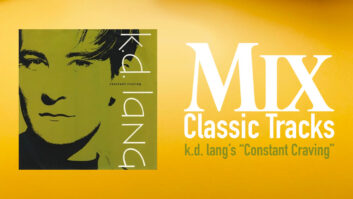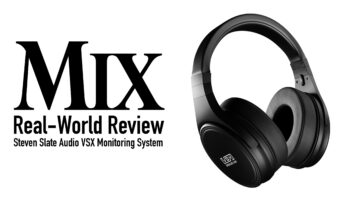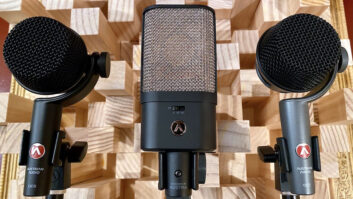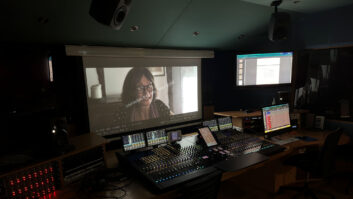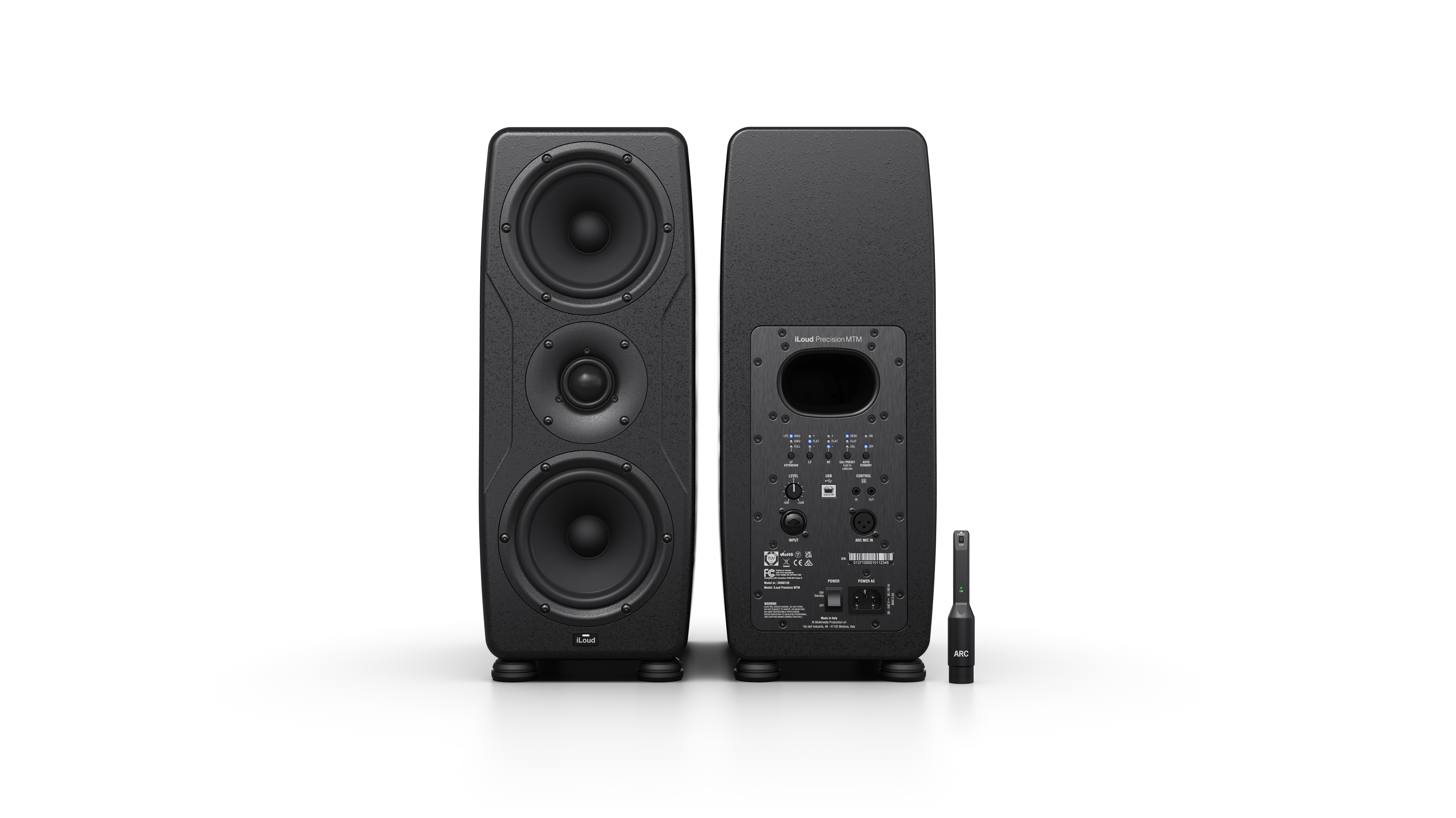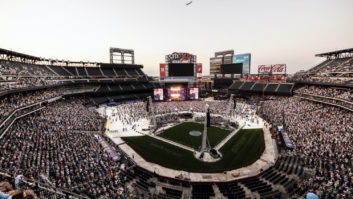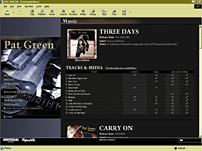
Fresh talent is what keeps the music industry vital and, ultimately,profitable. The paradox? There’s more and more music being made, butfewer and fewer traditional ways for it to gain attention. Narrow radioformats, shrinking A&R departments, scarce label deals but lopsidedlabel support in favor of “name” artists, limited toursupport, less music on MTV, even a shortage of ‘zines — it alladds up to the fact that today’s artists have to work harder to get theword out about what they do.
A strong, creative vision is essential. Beyond that, a savvyunderstanding of new media and markets provides a leg up. Here,Mix checks in with some artists and music business entrepreneurswho are honing their vision, reaching the public and reaping therewards.
BACK TO BASICS
Texas-based singer/songwriter Pat Green has been doing pretty wellfor himself. Literally. Although Green is now signed toRepublic/Universal Records, he previously released six albums —self-produced and independently distributed — on his ownGreenhorse imprint, and combined, they’ve sold over a quarter-millioncopies. At $8 to $15 a CD, coupled with touring, merchandising andsponsorships from Miller Beer and Justin Boots, Green was making a niceliving for himself, his band and his family — without amajor-label deal. In 2000, he grossed upward of $1 million. He wasoffered record deals in Nashville, but, as he says, “with astandard Nashville contract, I was going to lose money.”

It wasn’t just about the money. As Green, who’s been called aTexas version of Jimmy Buffett, told Pollstar in December 2002,“I wanted to be able to have autonomy over the creative side.With six records out before I ever signed, I had time to developmyself. We’d sold a lot of records on our own and were making plenty ofmoney…I didn’t want to have to change. When Republic came in andoffered us everything that we wanted, I was overjoyed. It was a perfectsituation for me.”
Although rooted in country, Green’s music is, as he describes,“a fusion of all the things I grew up with, from The Doors toStevie Wonder to Willie Nelson.” His independent streak and hisreluctance to go the typical Nashville route meant borrowing $12,000from family and friends to record his first album. After album two, hewas still working for his stepfather’s wholesale gasoline business,playing nightclubs and college parties on weekends. Students beganbuying the albums and word got out. It was on to college town bar gigs,and the long road up from there, until in 2002, between February andApril, 180,000 fans showed up in concerts to see him headline,including a show at Billy Bob’s, in Fort Worth, where 5,800 ticketssold out in 35 minutes.
We caught up with Green on his tour bus outside of Richmond, Va., inMarch, and asked if he’d always had a game plan. “We’ve just beenin the right place at the right time,” he says, “to takewhat we’ve learned and expand and capitalize on it. When we werestarting out, I couldn’t get anybody from a label to look at me.Honestly, I’m glad about that. I was too young, and my songwritingwasn’t up to snuff. It made me, and the people around me, figure outhow to sell ourselves: how to get on radio, get a marketing plan andspend our own money to promote the records. We started selling so manyrecords that when we finally signed a label deal, we had enoughautonomy that, pretty much, nobody was going to be able to say,‘This is what we expect out of your record,’ or,‘These guys need to be in your band,’ or even, ‘Thisis how it needs to look.’” Taking his music from Texas,where he’d become a star, to a national market meant taking steps back,including playing to much smaller crowds. “You take yourmedicine,” he comments. “You want it so bad, you just keepworking harder. In those smaller venues, you do better shows than youdo in the big ones. And you make sure you get down in the crowd andshake their hands, buy them a beer, and say, ‘Come back and seeus next time.’”
OUT OF NOWHERE
In March, the band Trapt topped Billboard‘s Heat Seekercharts, selling 12,000 CDs in a week. Their manager, DrakeSutton-Shearer of Zig Zag Communications, offered insight into theprocess that had gotten the band, described as “four guys whohang out and play music,” to a place where their eponymous WarnerBros. album generated a buzz.
“There were two years of marketing themselves [and twoself-released albums] before they were signed,” Shearer explains,“then continuing to market themselves with the help of WarnerBros. Trapt was incredibly motivated, playing live in the San Jose[Calif.] area and creating hardcore fans via the Internet. They put upa site on iuma.com, wherekids go to look for bands. Every night, [vocalist] Chris [Brown] wase-mailing back and forth with hundreds of kids from allover.”
Ultimately, it was on the strength of a four-song demo that Trapt,who has been called “compulsively original,” was signed.All involved were well aware of the commitment still required.“In this climate,” Shearer observes, “a baby band hasto prove that it has a really reactive record before you’re going toget the kind of investment you want from the record company. We had tomake this record react any way we could: shows, the Internet, talkingto people and, of course, radio.
“You sometimes, in this day and age, have to choose betweenthe cost of touring and the cost of promoting to radio,” hecontinues. “We knew we had to get to radio, because Trapt isn’tan ‘image’ band. The basis of this band is that they havegreat songs. We’d signed a publishing deal with Warner Chappell. Fortouring, we initially turned to them, as well as to Warner Bros., toassist us. We also invested a significant portion of our own funds intothe road. We decided to tour sporadically, to keep the band on theirtoes live, while, with Warner Bros., we put together a plan on theInternet that would create an awareness of the songs and the band’sidentity before going to radio.”
Trapt’s Internet campaign included blasts to a weekly e-mail list of10,000 fans, hundreds of Webzine reviews and interviews, winning avote-for-your-favorite-artist promotion on Coke.com, an AOL/Sessions appearance, servicing thesingle “Headstrong” to AOL radio for worldwide streaming,300,000 downloads of Trapt’s Winamp “skin,” and thecreation of Internet fan “E Teams” who helped spread theword. Also on the Website was a pop-up player, which fans could IM ore-mail to friends, containing songs and the band’s live-at-the-Roxyvideo.
“We’ve had over 1.7 million unique visits to ourplayer,” Drake asserts. “If all kids wanted was free music,I don’t think we would have sold any records. Prior to the albumrelease, we decided to offer for sale, online only, 2,000 signed CDs.That helped sell over 1,000 copies in a month — huge for a newartist with no retail presence. We also decided to offer the full albumas a download at $7.99, something no one else was doing at thetime.
“This whole Napster/KaZaA thing, people are fighting it,trying to protect their investment. But I think — more even thanfree music — kids like the convenience of being able to auditiona song. In a matter of minutes, they can decide if they want todiscover more about the artist. In a record store, they can’t go to thecounter and say, ‘Can you open these 50 CDs so I can listen tothem?’
On the non-Internet fronts, there were retail in-stores, almostdaily radio station acoustic visits and a focus on sports. Traptperformed at the Gravity Games, “Headstrong” was played onNHL broadcasts and at ESPN’s Winter X Games (and also featured in thetrailer for the Bruce Willis movie Tears of the Sun).“Street team” marketing was ongoing, including distributionof posters, stickers and song samplers, along with Red Bull-promotedstudent listening parties.
As the album was climbing Heat Seekers, touring attendance was up400% from December, “Headstrong” was set to spin on bothMTV 2 and MTV, and Trapt was booked to headline the Under the Radartour. Momentum was building, and the band was working harder thanever.
“There’s a lot of bad press about labels at the moment,”Shearer concludes. “I’d like to take a more positive position. Wefeel very fortunate to have, at Warner Bros., a passionate group ofpeople who believed in this record from the start and who, from dayone, have kept all of their promises. There’s a lot right with themusic industry, but bands today have to be willing to invest inthemselves, even after they reach an agreement with a label.”
THE INTERNET’S WIDE REACH

It’s not only AOL/TimeWarner artists who are featured in promotionson the online behemoth; AOL now has promotional agreements withapproximately 90 record labels. According to Evan Harrison, executivedirector of music industry relations for AOL Music, his job is to“go out and acquire great content by working with labels, artistmanagers, lawyers and every facet of the business.”
“We want to make it easy for people to discover, experienceand, ultimately, own music, regardless of the format they own itin,” he explains. “AOL is in 28 million households inAmerica. A key factor is that these households pay a monthly bill, sothey already have their credit card on file. With an audience thatlarge, it didn’t seem like a tough sell to convince record companiesthat we could create great programming. Where this is going… isto connect the dots to sales.”
Harrison’s department has a team of four who work closely withlabels to keep in touch with new music. “We sit down with thelabel and listen,” he continues. “We pick what we thinkwill really resonate with our audience, starting up to six monthsbefore a record comes out. We write a complete marketing plan. For agroup nobody’s heard of yet, we have a program called AOL Breakers,where we take an interest very early on. We’ve done this for MichelleBranch, Avril Lavigne, Vanessa Carlton, The Used, Tattoo, LucyWoodward, Miss Dynamite…
“One of the biggest challenges in the music business is to cutthrough the clutter. Not only are we very involved in the biggestrecords — like Britney Spears and Bruce Springsteen — butwe can make a huge impact early on in an artist’s career. We ask thelabel for access to the artist before anybody else at radio, TV or anyother media. With Avril, for instance, we were playing the single onAOL with just a photo of her, before even some of the people at Aristahad heard the song.”
An AOL Music marketing plan could include “First Listen”for new singles, “First View” for new videos andSessions@AOL for live performances and interviews. Features on the AOLmusic channel include Artist Discovery Network, an area devoted to newmusic from major and independent labels, and “News, Tours andTicketing,” which offers easy access to purchase concert tickets,merchandise and lyrics.
Most of AOL Music is barely two years old, yet its promotional valuehas already become equivalent to such traditional outlets asSaturday Night Live, with the model much the same. Labels payfor the logistics of providing the artist for interviews and shows, butdon’t pay AOL for the promotions, which are underwritten bysponsorships and by AOL as part of added value for itssubscriptions.
Harrison, who prior to coming to AOL worked for BMG Entertainment,is highly optimistic about the AOL Music marketing formats.“Coming from the music side,” he states, “you couldsee a huge opportunity. Radio playlists have been shrinking and TVstations are playing fewer videos. There’s a lot of music out there.The right medium can reach a lot of people and sell it.”
ADVERTISING: A DIRTY WORD?
The success of advertising campaigns featuring music by acts such asMoby and Death in Vegas have spawned a number of upstart businessesthat help facilitate a meeting of the minds between musical artists andcorporate advertising. SubZero, in Santa Monica, Calif., a division ofHUM Music and Sound Design, is one that’s given itself an edge bybringing onboard respected noncommercial radio DJ Tricia Halloran.
Halloran’s own cutting-edge midnight show, as well as the contactsshe’s amassed, make her a natural for the job. About the process ofpairing an artist with an ad campaign, she says, “Sometimes, it’scompletely random: Someone at an advertising agency is a fan of theband, they put a song up to the picture it works, and it’s accessibleprice-wise. But, obviously, any single band’s chance of having thathappen are pretty small.
“The slightly more scientific way to go about it is to havesomeone who knows about every band that’s out there — which ismost of the DJs at [Los Angeles’ NPR station] KCRW — studiouslyworking on a project for an ad agency, going through everything that’sin the ballpark of what the agency requires. That allows us to feed thebands that we think are really great and who deserve more attentioninto the ads.”
“Most agency people are pretty good with music,”Halloran adds. “They know a lot and are very hip about bands. Butit’s sort of exponential, the amount of knowledge you increase when youbring a DJ on to music supervise. I, myself, [laughs] live, eat andbreathe bands. I don’t even realize how much I know until somebody asksme a question and I start regurgitating information.”
For these breaking artists, such as Mexican band Kinky, who werehired by Halloran for a series of Honda motor car spots, commercialscan provide not only exposure but credibility in the commercial popmusic world. Just as important, it provides some cash to keep themgoing. “Sometimes, if a band can just stay out for another year,then their record might break,” Halloran comments. “Or theycould get enough fans to make it on their own without commercialairplay. It’s not necessarily a situation where people are going to runout and buy the record when they hear the commercial. That connectionis still hard to make. People generally have to find out by word ofmouth who the band is that they’ve heard.”
Still, like repeated radio airplay, repeated commercial play createsawareness of a song that can make it stand out and even be requested atrecord stores. “Most of these bands are never going to get playedon commercial radio,” says Halloran, “and they’re not goingto get a hit record just out of a commercial. But if they can make aliving doing this instead of painting houses, so much thebetter.”
The Music Complex Makes it Simple
Helping young bands and artists get their music to market is the aimof the Music Complex, a project management company founded by industryvet Bruce Benson. Focused on unsigned artists, the company assists inclarifying vision and goals, offering practical advice and projectcoordination for those in the process of developing a music career.
“Just because someone is a good musician, or even a greatsinger/songwriter, doesn’t mean that they’re able to create a productthat makes sense,” Benson explains. “We can help in everypart of the process, from initial consultations on goals, throughselection of material and definition of audience, to the practicalmatters of production, such as choosing an arranger, producer andstudio. We also advise on manufacturing, graphics and PR opportunities,etc. We are the ultimate ‘one stop’ for theunsigned.”
Drawing on his own background as a songwriter, producer andvocalist, Benson says, “Not that long ago, labels were picking upanybody they thought had talent, blanketing areas [of the country] andstyles of music, hoping that they would hit with something. There werelots of development contracts. Now, there’s been a paradigm shift. Thatmoney and support aren’t there. Labels won’t look at most bands untilthey’ve already generated their own regional buzz.
“The artist is expected to have all of the tools —marketing, arranging, booking, PR — that’s asking a lot. It’s toomany skill sets for people to excel in on their own. We help to clarifytheir vision, and we’ll give them specifics on how to tweak whatthey’re doing. They can take that and do the legwork themselves, or wecan implement the plan for them, including timelines and budgets. Thisis the music business, not the music game room. If you’re in business,you have to define your market and your competition, and then you needan organized game plan.”
— Maureen Droney
www.E-MusicComplex.com
